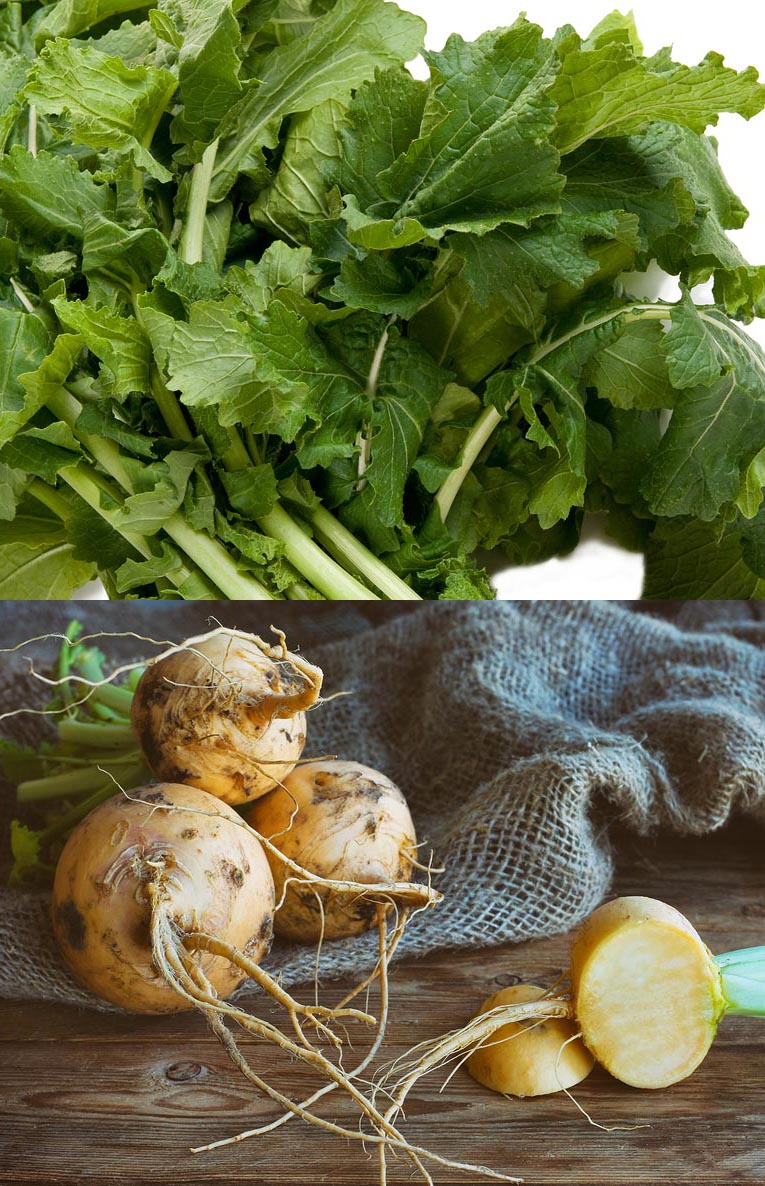Like their leafy green cousins, turnip greens contain an abundance of nutrients important to good health. Scientifically known as Brassica rapa, turnip greens are a cruciferous plant in the same family as other nutrient-dense vegetables, including broccoli, cauliflower, kale and cabbage. Cruciferous plant consumption is associated with lower risk of chronic illness such as heart disease, arthritis, cancer, diabetes and autoimmune disease.
The entire turnip plant is rich in vitamins and minerals, but the greatest proportion of nutrients are found within the leaf blades. These nutrients include the antioxidant Vitamins A, C, E and K; B vitamins; calcium and folate. What really makes turnip greens a powerhouse for supporting good health are the antioxidants, which help the body fight inflammation and play a major role in cancer prevention, healthy aging, and a heart health.
One cup of turnip greens packs a whopping 600% of your daily requirement for Vitamin K, which helps keep bones strong and plays an important role preventing osteoporosis. The carotenes, including beta-carotene, found in turnip greens help support eye health and protect against eye disease such as macular degeneration.
When selecting turnip greens, buy as fresh as possible and opt for organic if available. Look for deeply colored leaves that don’t show signs of wilting or damage, such as spotting. The greens are often sold while still attached to the large white root. You can roast the roots and use the greens for stir-fry or add to soups or stews.
References
- Reder, R. & Odell, G.V., “Vitamin Content of Turnip-Green Plants in Relation to Growth.” In Plant Physiology. pp.131-135.Accessed June 17, 2918: https://www.ncbi.nlm.nih.gov/pmc/articles/PMC540477/pdf/plntphys00387-0021.pdf
- Mozaffarieh, M. Scacu S., Wedrich, A., “The role of the carotenoids, lutein, and zeaxanthin, in protecting against age-related macular degeneration: A review based on controversial evidence.” Nutrition Journal (2003)2:20. Accessed 17 June 2018: https://doi.org/10.1186/1475-2891-2-20
- Verker, R. Schreiner, M., et al., “Glucosinolates in Brassica vegetables: The influence of the food supply chain on intake, bioavailability and human health,” Molecular Nutr & Food Research,(2009, Sept 22) Accessed 17 June 2018: https://onlinelibrary.wiley.com/doi/abs/10.1002/mnfr.200800065
- Ware, M. “Everything you need to know about turnip greens.” Posted May 18, 2017: MedicalNewsToday.comAccessed 17 June 2018: https://www.medicalnewstoday.com/articles/285961.php
- WorldsHealthiestFoods.com “Turnip Greens.” Accessed 17June 2018: http://www.whfoods.com/genpage.php?tname=foodspice&dbid=144

